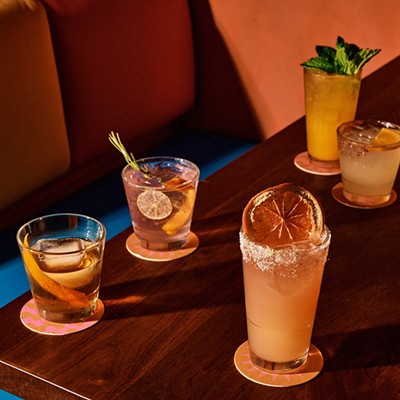It sounds like a tale from Boccaccio or Chaucer, doesn't it? Handsome Italian winemaker visits a nunnery outside Rome to consult on "natural" grape growing and ends up staying on to make the wine... You can guess the rest... It doesn't hurt that the winemaker in question is -- how to put this? -- easy on the eyes (see below). Sound too much like a Medieval novella to be true? Here's the link to the Cistercians Sisters' website, including a slide show of their beautiful monastery in the province of Viterbo, Italy, the Trappist Monastery of Vitorchiano. And here's a link to a YouTube video about their lives.
And that's the delicious wine, above, Coenobium (pronounced cheh-NOH-bee'oom, Latin for cloister or convent).
Sexual innuendo aside, there exists a long tradition of monks and nuns growing grapes and making wines. In the Middle Ages, when the various religious orders of Catholicism flourished in Europe, monasteries and convents were endowed with sizable land holdings that they used to grow a wide variety of crops. In Burgundy, for example, monks are often credited with creating one of the earliest de facto vineyard-designation systems. Because they kept such meticulous records and because their properties were commonly "cloistered" (or walled-off), they were among the first to recognize that the same grapes grown in the same vintage produced different flavor profiles depending on the growing site. To this day, Clos de Vougeot remains one of the world's most recognizable crus or growing sites and is famous for its cloistered (walled) vineyard, one of many in Burgundy that date back to the Middle Ages.
A few years ago, the nuns contacted one of the pioneers of Natural wine in Italy and the founder of one of the leading Natural wine movements in Europe (Vini Veri or real wines), Giampiero Bea (right), heir and owner of the Paolo Bea winery in Montefalco, Umbria. They asked him to come to the monastery to vinify the first vintage of Coenobium in 2005 and -- in accordance with the precepts of Natural wine -- he made the wine using only native or ambient yeasts, i.e., the yeasts that occur naturally and spontaneously in the vineyard and in the cellar where the wine is made.
Last night, Tracie P and I took a bottle to another couples' home, where it paired superbly with a grilled pineapple and avocado salad. Made from Trebbiano, Malvasia, and Verdicchio grapes, the 2009 Coenobium Lazio Bianco was bright on the nose and in the mouth, with waves of apricot and peach flavors combined with a good dose of saltiness. Like the happy nuns who have found such a talented winemaker, it's just one of those wines that makes you happy... You'll find it at the Houston Wine Merchant for less than $30.
We're kidding, of course, when we insinuate that there was any hanky panky between Giampiero and his clients. But, hey, it's happened before. Here's a link to Boccaccio's NC-17 tale of Masetto da Lamporecchio who "feigns to be dumb, and obtains a gardener's place at a convent of women, who with one accord make haste to lie with him." It pairs wonderfully with the Coenobium, by the way.
Follow Eating Our Words on Facebook and on Twitter @EatingOurWords






